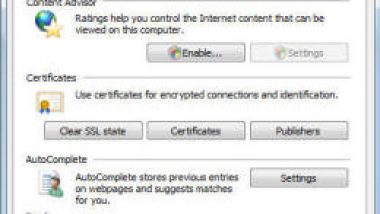
As mentioned in the comments below, the eBook shown to the left is no longer available. But, there is a new eBook available from Microsoft Press for a limited time, so grab it now! This new eBook is 10 chapters long and is called Introducing Microsoft SQL Server 2008 R2 by Ross Mistry and Stacia Misner. Download the PDF file, 7.74 MB
MICROSOFT PRESS is offering a free eBook download for a beta version of Introducing Microsoft SQL Server 2008.
You will need to sign in using your Windows Live ID. If you don’t already have a Windows Live ID, you can easily register for one.
The book is downloaded as a 237 page PDF file. Be sure to bookmark the download page, because you can’t save the PDF. You’ll need to go back to the Microsoft Press site to reopen the PDF each time you want to read it.
Contents:
- Security and Administration
- Performance
- Type System
- Programmability
- Storage
- Enhancements for High Availability
- Business Intelligence Enhancements
Free e-book offer: Introducing Microsoft SQL Server 2008 by Peter DeBetta, Greg Low and Mark Whitehorn
Reviewed by Kathleen Atkins, project editor, Microsoft Press
Peter DeBetta, the principal author of this book, welcomes readers to the soon-to-be-released SQL Server 2008. An MVP for SQL Server and a holder of many other credentials and longstanding SQL Server experience, DeBetta (with his coauthors) offers in this electronic beta book a discerning view of the new version of SQL Server.
DeBetta and his coauthors—Greg Low and Mark Whitehorn, who are also database experts, consultants, developers, and writers—divide their discussion of SQL Server 2008 into seven topics: Security and Administration, Performance, Type System Enhancements, Programmability, Storage, Enhancements for High Availability, and Business Intelligence Enhancements. In each of these chapters, the authors describe new or improved features. They could not address every additional capability of or improvement in SQL Server 2008, however, because their view (and thus their readers’ view) into the product is an early one. Given the goals of the book—to introduce and explore the product in a preliminary way, both conceptually and practically (with sample code)—readers will find plenty to interest them.
For example, database developers might be very glad to know that T-SQL remains part of the product, and is, as yet, “still most often the best choice for retrieving and manipulating data.” CLR integration has been improved since SQL Server 2005 and the new product introduces system CLR types, but “T-SQL is still not going anywhere.”
Because Peter DeBetta hopes to be the first technical book author on The New York Times’ bestseller list, he recommends Introducing Microsoft SQL Server 2008 to everyone. But the people who really ought to read it are those who want to begin using the new and improved tools in SQL Server 2008.


Thanks for the information about the free ebook for SLQ 2008. I am currently studying for my MCTS for SQL 2005 and will find this ebook very useful.
i liked this book
it very great and wonderful to make thing happen throuugh technology.
unable to download the pdf . when i click on the link page cannot be dispalyed. Can someone pls send the ebook introducing microsoft sql server 2008 ebook
Harini, It looks like that link is no longer active. But there is a new free eBook offer from Microsoft Press – Introducing Microsoft SQL Server 2008 R2 – For a limited time, you can download this 10-chapter e-book: Introducing Microsoft SQL Server 2008 R2, by Ross Mistry and Stacia Misner. PDF file, 7.74 MB http://go.microsoft.com/fwlink/?LinkId=189147
The R2 one only covers… R2! How about all the rest of us that just want to take the 70-453, huh?
Luckily, Pete was good enough to provide us with a copy:
http://sqlblog.com/files/folders/books/entry27523.aspx
http://sqlblog.com/files/folders/27523/download.aspx
Hi,I liked this book,this book is very useful for me.
The SQL standard names are LOWER and UPPER, not LCASE and UCASE. Some prcotdus like MySQL alias LCASE and UCASE to the LOWER and UPPER functions for increased compatibility with other non-standard prcotdus and some prcotdus that are not databases. MS Access uses LCASE and UCASE as does the non-database prcotdus Excel and OOCalc. There are some programming languages which use LCASE and UCASE. There may be other DB prcotdus that do not use the SQL standard LOWER/UPPER names for these functions. Oracle does use LOWER/UPPER. DB2 supports both. PostgreSQL uses LOWER/UPPER.